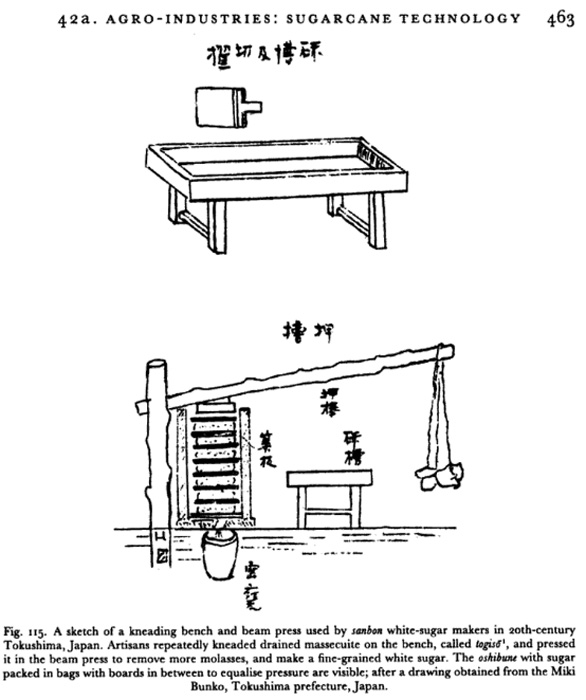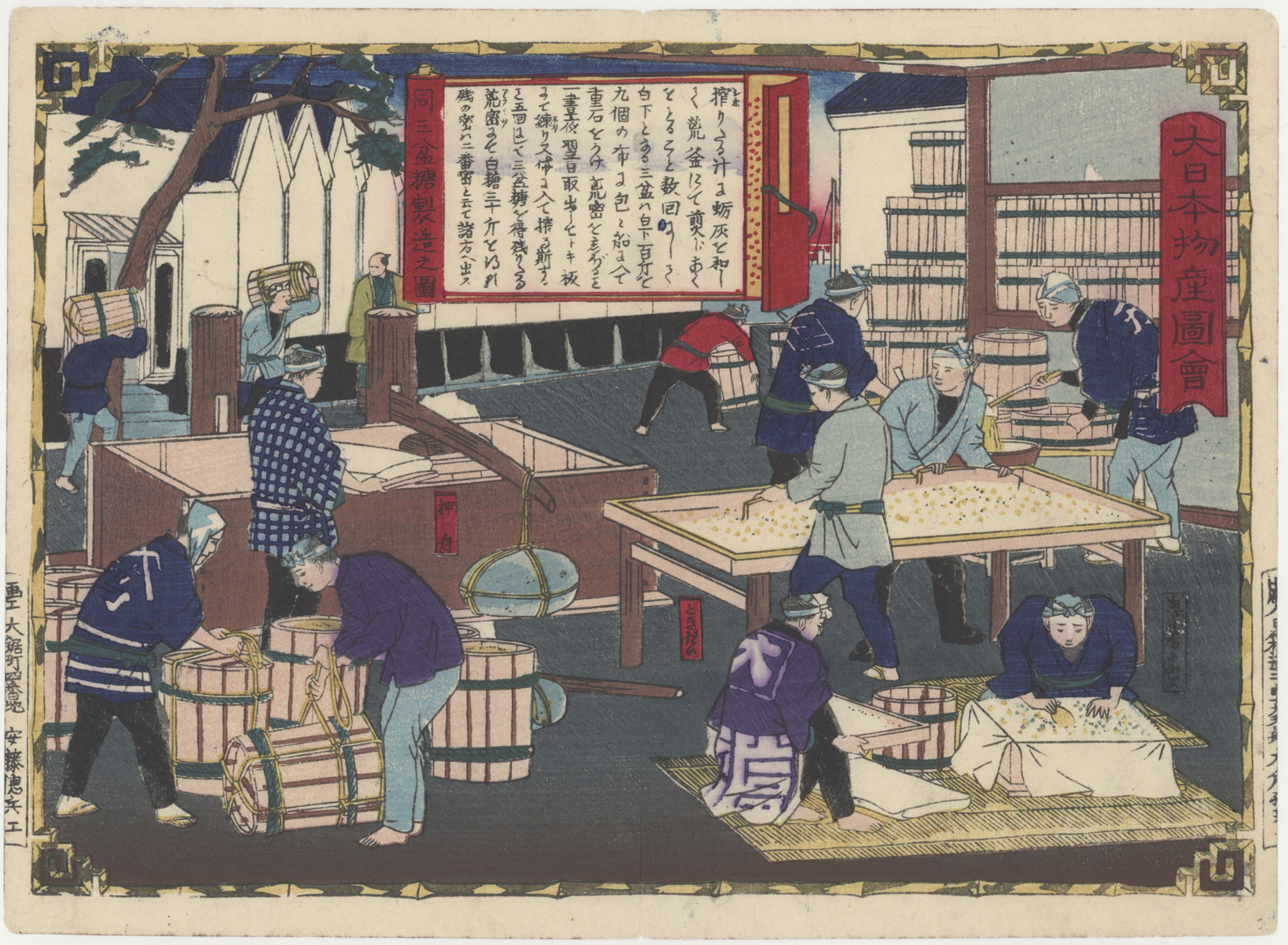About This Print
One of 118 prints in the series Dai Nippon Bussan Zue (Products of Greater Japan), issued in August 1877 to coincide with the opening of Japan’s first National Industrial Exposition (Naikoku Kangyō Hakurankai) held in Tokyo’s Ueno Park. It depicts the making of sanbon (highly refined sugar) in Sanuki Province, present day Kagawa Prefecture.Sanuki (讃岐国) was an old province of Japan on the island of Shikoku, with the same boundaries as modern Kagawa Prefecture. It faced the Inland Sea and bordered on Awa and Iyo Provinces. Across Naruto strait it bordered Awaji Province too.
Basil Hall Chamberlin, British Japanologist, in his 1907 Handbook for Travellers in Japan, notes that "The chief production of this province of Sanuki are popularly known as ‘the three white things’ (sam-paku), viz, salt, sugar, and cotton. The sugar industry is modern, having been introduced from Satsuma only half a century ago."1
Sugar Refining TechnologySource: Science and Civilisation in China, Volume 6. Biology and Biological Technology Part III. Agro-Industries and Forestry, Joseph Needham et. al., Cambridge University Press, 1996. p. 462, 463.
Japanese sugar makers studied Chinese coning and claying techniques from... [various 16th and 17th Chinese texts], as well as interrogating Chinese visiting Nagasaki.... [B]y the close of the 18th century sugar makers in Sanuki on the island of Shikoku, had developed a different technique for removing the molasses film surrounding the sugar crystals, to make white sugar. It consisted of adding small quantities of water to massecuite, kneading and then pressing out syrup. This indigenously devised technique, which we refer to as the sanbon method, would by the early 19th century surpass claying as the main method of separating crystalline sugar from molasses in Japan.

Multiple Editions (Variant Printings)
At least three variant printings (editions) were made of this series. Each variant printing uses a different colored cartouche containing the series' title, either red, green or rainbow-colored. Different colored borders were also used and variances in the use of colors and shading are present in the three editions.
1 Handbook for Travellers in Japan Including the Whole Empire from Saghalien to Formosa, Basil Hall Chamberlain and W. B. Mason, John Murray, London, 1907, p. 432.
Print Details
| IHL Catalog | #1470 |
| Title or Description | Making Sanbon Sugar (Highly Refined Sugar) in Sanuki Province Dō sanbontō seizō no zu 同[讃岐国]三盆糖製造之図 |
| Series | Dai Nippon Bussan Zue 大日本物産図会 (Products of Greater Japan) |
| Artist | Utagawa Hiroshige III (1842–1894) |
| Signature |  |
| Seal | none |
| Publication Date | 1877 (Meiji 10) |
| Publisher |  appearing in right margin Full cartouche reads 出版人 日本橋通一丁目十九番地 大倉孫兵衛 (Publisher, Nihobashi-dōri Itchōme 19-banchi, Ōkura Magobei) |
| Impression | good |
| Colors | excellent |
| Condition | good - vertical centerfold |
| Genre | nishiki-e; kaika-e |
| Miscellaneous | |
| Format | chuban |
| H x W Paper | 6 7/8 x 9 3/8 in. (17.3 x 23.8 cm) |
| H x W Image | 6 5/16 x 8 15/16 in. (16 x 22.7 cm) |
| Literature | |
| Collections This Print | The Kyushu University Museum Digital Archive |


